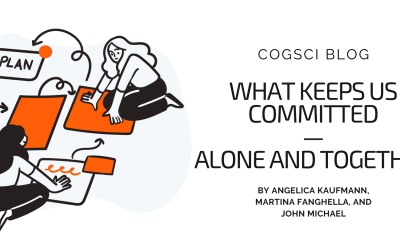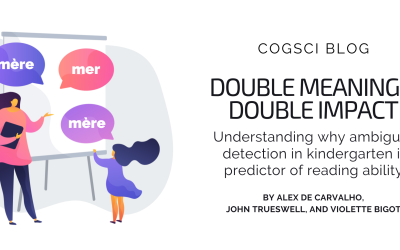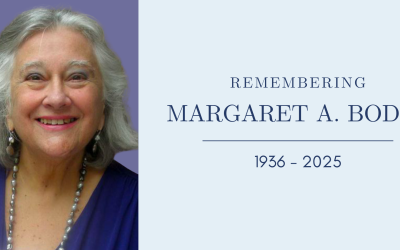Welcome to CogSci Unpacked, an exciting blog series dedicated to summarizing academic papers from the Cognitive Science, a CSS Journal. Our goal is to bridge the gap between academia and the broader public, fostering a better understanding of cognitive science and making it accessible and relatable to all. If you’re curious to dive even deeper, we invite you to explore the full academic paper.
Imagine observing a barista crafting a cappuccino: grinding beans, foaming milk, pouring the liquid, serving the cup. Our minds naturally separate these actions into individual steps – even though, upon closer inspection, there are no pauses or breaks in the actual movements that tell our minds to do this. This mental process, known as ‘event segmentation’ (Zacks & Tversky, 2001), is automatic and intuitive when actions are familiar and goal oriented. But what happens when we encounter unfamiliar sequences without clear goals or labels, such as modern dance? This question was the focal point of a recent study that aimed to shed light on how we perceive the separate steps in modern dance sequences.
In Monroy & Wagner (2023), we sought to place adults in an experimental context that was akin to the everyday experience of infants, who constantly encounter new action sequences and must discover when the relevant boundaries occur. Modern dance provided an ideal medium for this exploration: it presents fluid movements that contain no overarching goal and don’t revolve around objects like most everyday actions. Very few adults have watched any modern dance and even fewer have any experience dancing it themselves.
In a first experiment, participants watched clips of professional modern dancers and pressed a key whenever they perceived a boundary between steps. This is a classic ‘event segmentation’ task , developed by cognitive scientists Barbara Tversky and Jeffrey Zacks (Newtson, D.,1973), which has been used for decades to probe how we mentally chunk ongoing sequences into separate events. In our study, we asked the dancers to choreograph dances with four unique steps. This meant that while each dance was continuous, the dancers had specific intentions for where the steps ‘should’ be perceived – what we call ‘true boundaries’. We then compared how well adults were able to identify the intended boundaries of the dance, as well as how consistent they were with segmenting the dance as a group.
What we found was that, indeed, participants could identify some true boundaries, but they also perceived additional boundaries that the dancers did not intend, and they missed some intended ones. Overall, adults were better than chance at identifying dance steps and they agreed with one another to a reasonable extent. These findings are remarkable, given the complete novelty of the modern dance clips for most viewers.
Our first experiment also showed, interestingly, that adults were better at identifying steps that were easily named (for instance, “jump”). This made us hypothesize that, perhaps, adults are using language to guide their segmentation, in a top-down way. To test this, we conducted a second experiment that explored the interaction between language and event segmentation. Participants viewed frames extracted from the dance clips and identified steps they could label with a word (e.g., “cartwheel”). Comparing the results from both experiments revealed that there appears to be a connection between language and recognizing movement events in real-time. If we can immediately conjure to mind a word for an observed movement, like a “spin”, we may be more likely to chunk that movement from within the ongoing stream. Though these findings are correlational, not causal, they support the idea that language shapes our perception of the world and how we structure temporal events into meaningful units.
Surprisingly, participants struggled to effectively leverage kinematic cues. We had expected that clear spatiotemporal cues like pauses (e.g., a dancer moving their arm up and then down with a brief pause at the turning point) would be obvious breakpoints. This assumption rested on many studies that have established that we use perceptual cues – such as pauses and statistical regularities – and our own motor system to anticipate observed actions (Stapel, Hunnius & Bekkering, 2012). Our study suggests that observers cannot take advantage of these skills very well when confronted with unusual movement sequences. This raises interesting questions about what happens when we first perceive other kinds of unfamiliar action sequences that we have no visual or motor familiarity with, like cultural practices or rituals from far-flung places.
This study not only bridges cognitive science and dance but also reveals how our minds impose structure on continuous movement, offering new insights into the interplay between perceptual and conceptual information, and highlighting the role of language in event segmentation.
References





